By Dan Weisz
Over the past few months, I’ve been ‘collecting’ photos of owls and thought it was time to share them with you.
It has been said that “you do not find owls- owls find you!” Barn Owls like this one are found on every continent except for Antarctica. Owls and humans have been connected from the dawn of history. Owls were present in the earliest cave paintings and in the folklore of every place on earth where people have encountered them. Why? The mystique of owls have inspired humans wherever they are found on earth. We love and celebrate their aesthetic beauty and sense of mystery. Look into this bird’s eyes, and tell me what you see.
Below is a Barn Owl I found under a bridge in Pima County back in May. This was a treat to see! You can see why Barn owls have been known by other common names such as Monkey-faced Owl, Ghost Owl, and others. This species is one of a few birds species that lives on six continents, joining Osprey and Peregrine Falcons. To read bit more about this species, go to the Desert Museum’s https://www.desertmuseum.org/visit/rff_barnowl.php?print=y
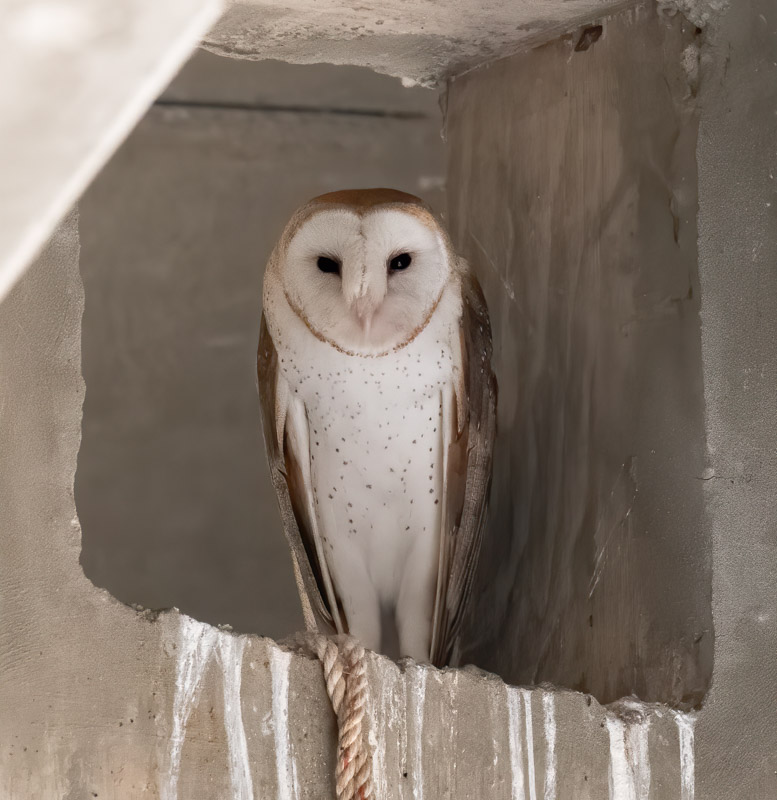
The neighbor of a friend called me in June to let me know he had two Great Horned Owls roosting in his tree every morning. I drove over to find the pair right where he said they would be. At about 8:30, the owls would fly about 200 yards to the southeast to spend their day in a tall palm tree. I imagine the shade was thicker in the heart of that palm. The bird below was the female Great Horned Owl, and much bigger than the male sitting on another branch.
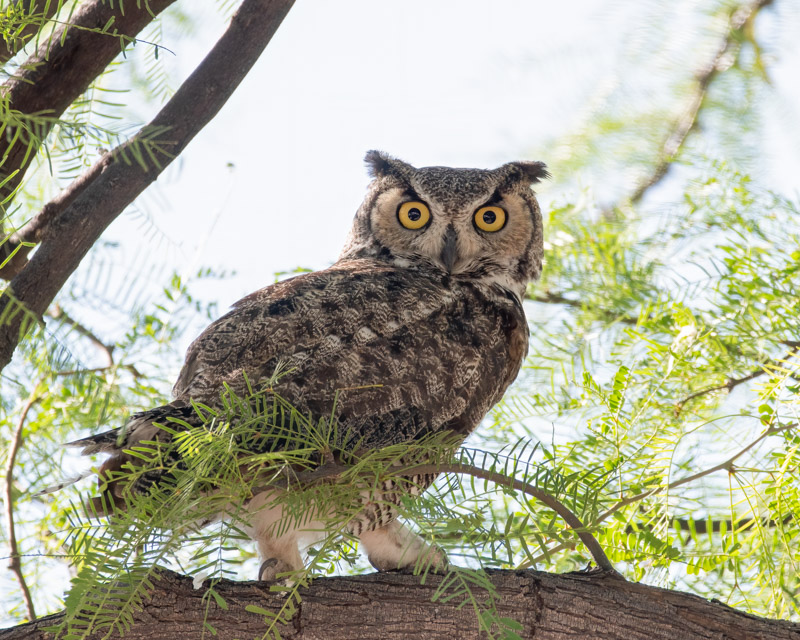
This is the male. I like how the texture and colors of his feathers match that of the tree it is perched in.
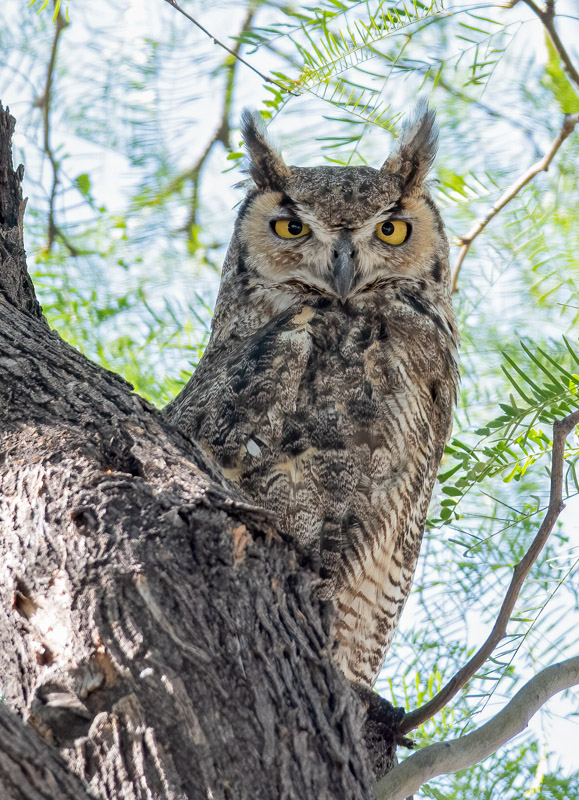
This, again, is the male Great Horned Owl. The over-the-shoulder look makes this shot!
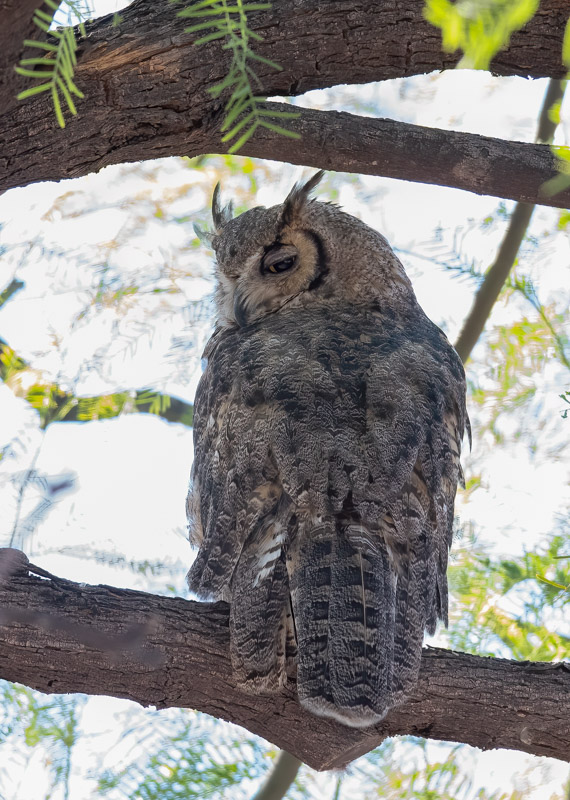
Back in March a friend brought me to a location in southern Arizona where we watched this Cactus Ferruginous Pygmy Owl one morning. This species had been on the Endangered Species list until 2006 when it was removed from the list following a suit by the National Association of Home Builders. Needless to say, these nesting areas are a tightly kept secret now, for the owls’ sake. I did not want to share this photo until after this season’s nesting was completed. National Geographic had a story about them this June https://www.nationalgeographic.com/animals/2020/06/cactus-ferruginous-pygmy-owl/ as did the Center for Biological Diversity, based in Tucson https://www.biologicaldiversity.org/species/birds/cactus_ferruginous_pygmy_owl/index.html
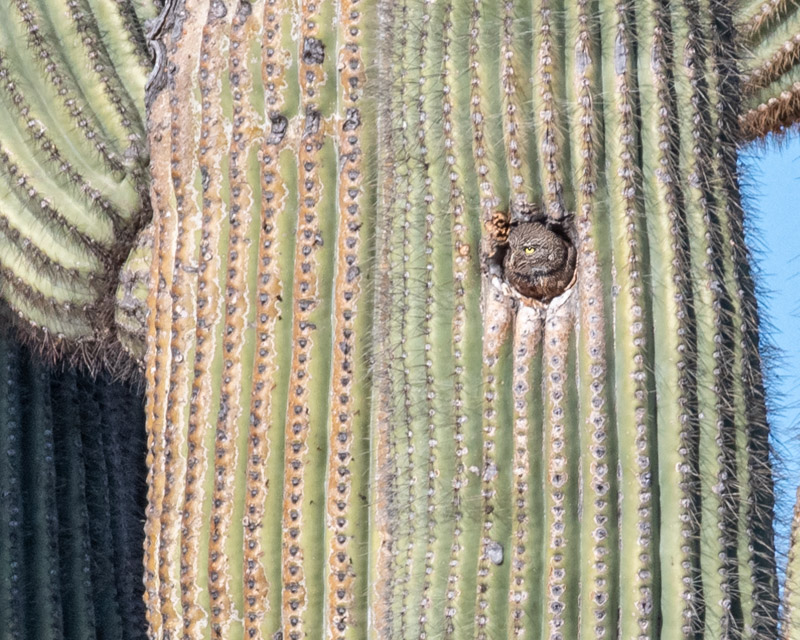
We returned at the end of April and could not find the same or other owls. At the very end of the morning, we walked around to the back side of a saguaro we had been watching for a long time. The “ghost” of an owl appeared for just a second before ducking back into its safe saguaro nest cavity.
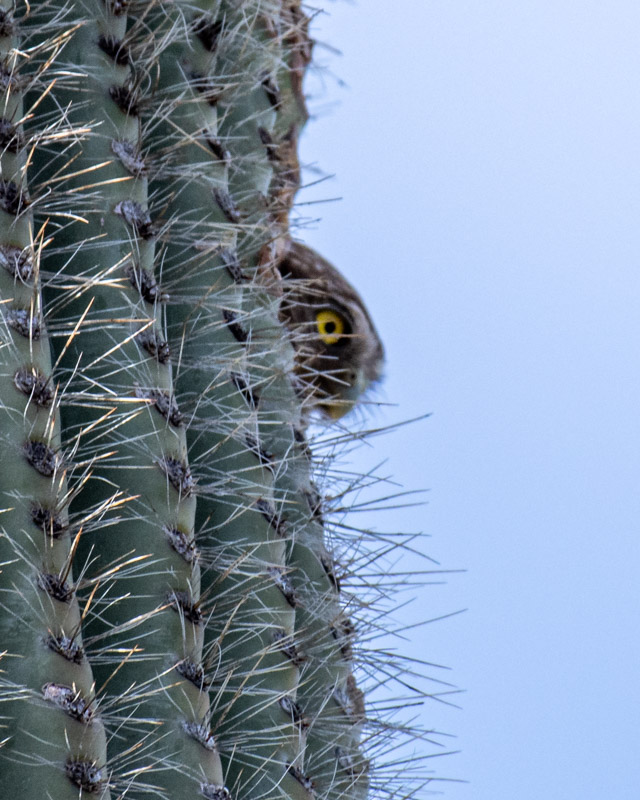
Back in Tucson, another friend let me know about a family of Western Screech Owls that lived at her house. The five youngsters had fledged but all were often visible during the daytime. I was thrilled to be able to visit these birds on several occasions. Here, three of the young were hanging out on the opposite side of the house from their parents.
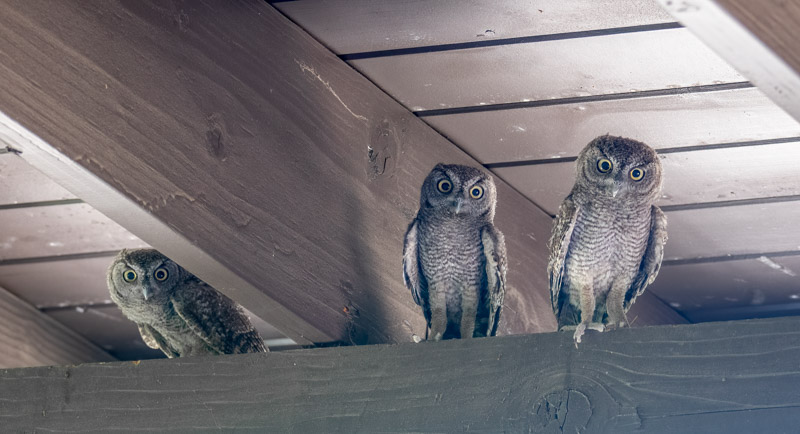
The photo below is a close-up of the owl on the left in the photo above. In the shot above, I was standing under the patio roof. In the shot below, I walked out of the patio and was shooting the picture from “behind” the owls while standing in the desert. The owl didn’t bother turning around, but it did turn its head around to watch me.
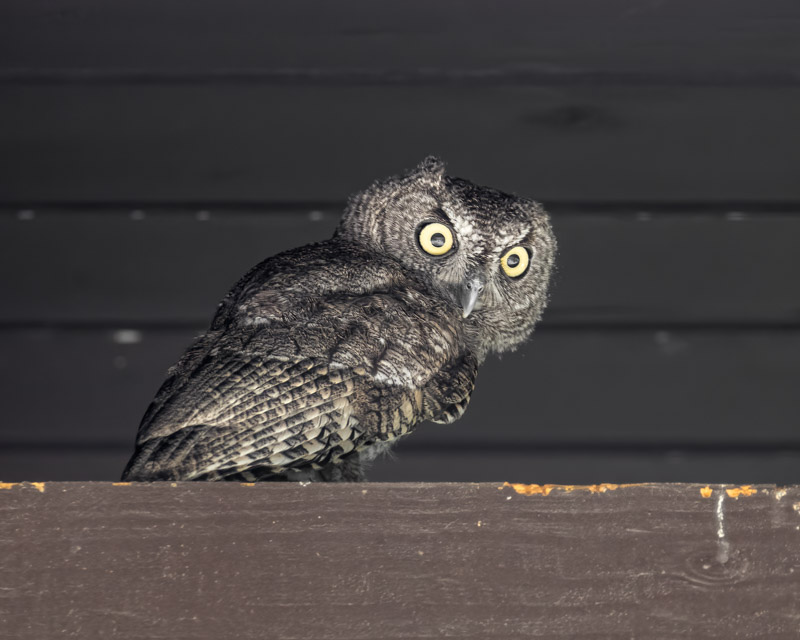
And here is mother perched on the opposite side of the house from the three owlets. Mom was on the side of the house where the last two Western Screech Owlets were spending the day. Dad was also on that side of the house.
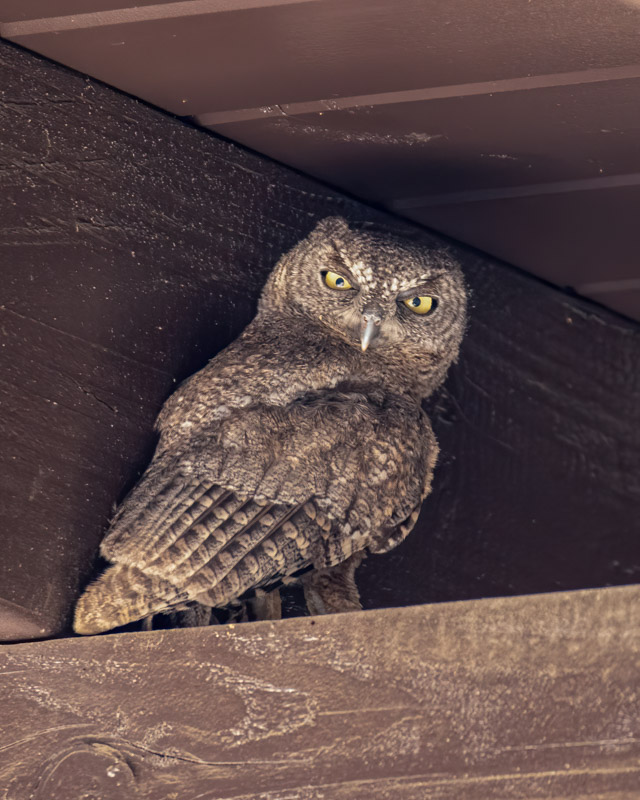
Owl’s faces are like Mother Nature’s Rorschach test. Everyone sees something different in each face!
